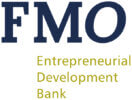The Impact of Senegal’s Mining Industry
The mining industry in Senegal has been a cornerstone of the country’s economic development.
It has played a significant role in shaping the nation’s GDP and creating employment opportunities.

The industry is rich with a variety of minerals, including gold, phosphates, and zircon. These resources have attracted both local and international investors, contributing to the growth of the sector.
However, like any other industry, it faces its own set of challenges. These range from environmental concerns to the need for sustainable mining practices.
In this article, we delve into the impact of Senegal’s mining industry. We explore its contributions, challenges, and the future of mineral exploration in the country.
Join us as we uncover the significance of this sector in Senegal’s economic landscape.
Senegal’s Mining Industry: An Overview
Senegal’s mining industry has a rich history and a promising future.
The sector has evolved over the years, with the government playing a key role in its development.

Foreign investment has also been instrumental in the growth of the industry. This has led to the discovery of new mineral deposits and the expansion of mining operations.
The industry is now a major player in the country’s economy, contributing significantly to its GDP.
The Historical Context of Mining in Senegal
Mining in Senegal dates back to pre-colonial times.
Artisanal mining was prevalent, with locals extracting gold and other minerals.
The colonial period saw the introduction of industrial mining. This marked a significant shift in the sector.
Post-independence, the government has been proactive in promoting and regulating the industry.
Key Minerals and Resources
Senegal is endowed with a variety of minerals.
Gold is one of the key resources, with several active mines across the country.
Phosphates are another major mineral. Senegal is one of the world’s top producers of this resource.
- Zircon, a mineral used in ceramics and refractories, is also found in abundance.
The country also has deposits of heavy minerals like ilmenite and rutile.
These resources form the backbone of Senegal’s mining industry.
Economic Contributions of the Mining Sector
The mining sector is a key driver of Senegal’s economy.
It contributes significantly to the country’s Gross Domestic Product (GDP).
The sector also generates substantial foreign exchange earnings through mineral exports.
Mining operations have led to the creation of numerous jobs, both direct and indirect.
The industry also stimulates growth in other sectors, such as construction and services.
Overall, the mining sector plays a crucial role in Senegal’s economic development.
Mining’s Role in Senegal’s GDP
The mining sector is a major contributor to Senegal’s GDP.
It accounts for a significant portion of the country’s total economic output.
The sector’s contribution has been growing over the years, reflecting the expansion of mining activities.
This growth trend is expected to continue, given the potential for new mineral discoveries.
Employment and Infrastructure Development
The mining industry is a major employer in Senegal.
It provides jobs for thousands of people, both directly and indirectly.
The sector also drives infrastructure development in mining regions.
This includes roads, power supply, and other essential facilities.
These developments have a positive impact on local communities, improving their living standards.
Challenges and Opportunities
The Senegal mining industry faces several challenges.
These include environmental concerns, resource management issues, and social impacts.
However, these challenges also present opportunities for improvement and growth.
For instance, adopting sustainable mining practices can help mitigate environmental impacts.
Moreover, effective resource management can enhance the industry’s long-term viability.
Environmental and Social Impacts
Mining activities can have significant environmental and social impacts.
These include land degradation, water pollution, and displacement of local communities.
However, many mining companies in Senegal are adopting responsible mining practices.
These practices aim to minimize negative impacts and promote sustainable development.
Government Policies and Investment Climate
The Senegalese government has implemented various policies to regulate the mining sector.
These policies aim to ensure sustainable and responsible mining practices.
The government also offers incentives to attract investment in the mining sector.
These include tax breaks, streamlined licensing procedures, and infrastructure support.
Overall, the investment climate in Senegal’s mining sector is favorable.
The Future of Mineral Exploration in Senegal
Mineral exploration in Senegal holds great promise.
New technologies are making it easier to discover and extract valuable minerals.
Moreover, the government’s supportive policies are encouraging more exploration projects.
The future of Senegal’s mining industry looks bright with these developments.
Technological Advancements and Exploration Projects
Technological advancements are revolutionizing mineral exploration in Senegal.
Modern tools and techniques are improving the efficiency and accuracy of exploration.
Several new exploration projects are underway, thanks to these advancements.
These projects could lead to the discovery of new mineral deposits, further boosting the industry.
Conclusion: Senegal’s Mining Sector as a Pillar of Economic Development
Senegal’s mining sector is a key pillar of its economic development.
The industry’s contribution to GDP, employment, and infrastructure development is significant.
With continued exploration and responsible practices, the sector’s impact on Senegal’s economy will only grow.




















































